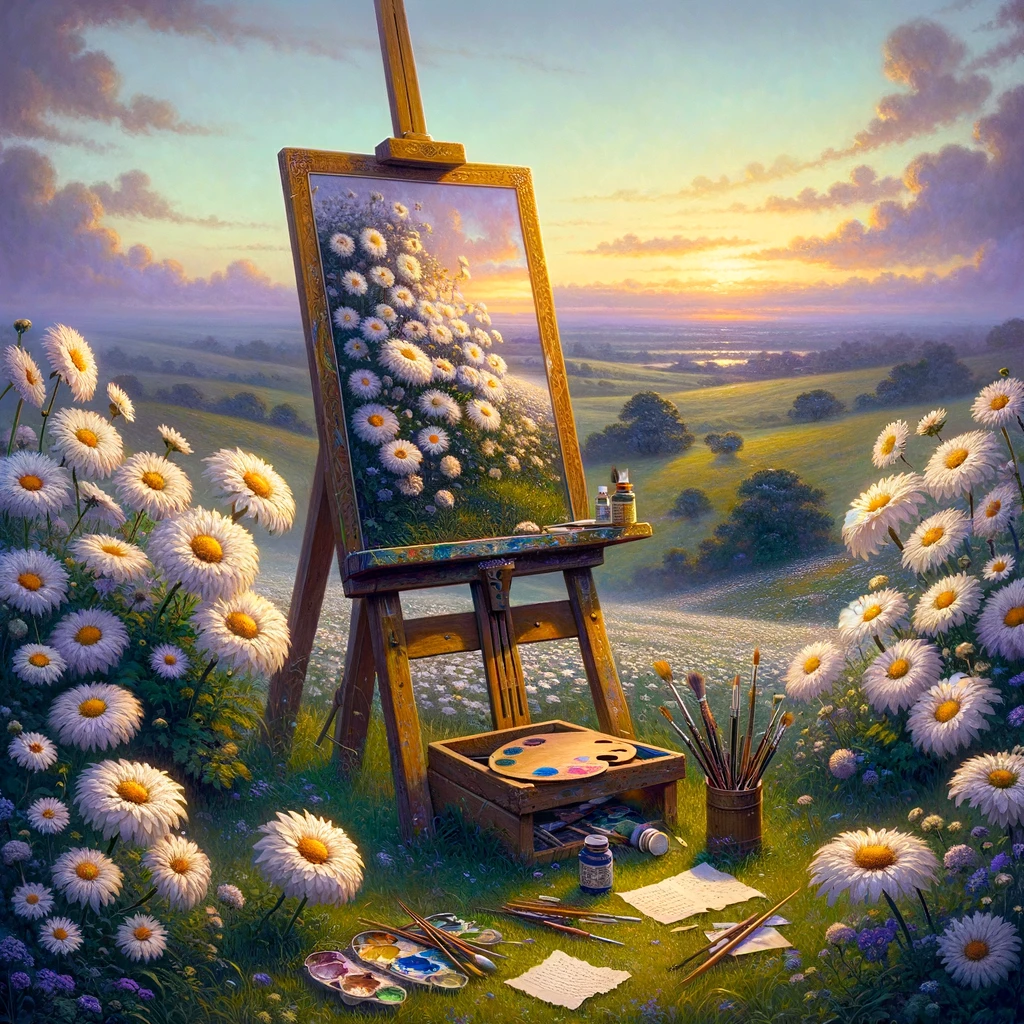Visual Description
The Dreamdrift Daisy is a hypnotically beautiful flower whose petals shift subtly from a soft, pale yellow at the base to radiant gold at their tips. Each flower seems perpetually in motion—even in windless air, its petals gently flutter in rhythmic, mesmerizing patterns. When gazing directly at the bloom’s dark core, one perceives the illusion of a slowly spinning vortex, pulling subtly at the edges of awareness.
A fully mature bloom measures about five inches across, atop slender, graceful stems roughly one foot high. In a field, the combined fluttering of petals creates a visual ripple, resembling waves across a golden sea.
Habitat and Growth
Dreamdrift Daisies thrive in wide, sunlit grasslands and gently rolling hills where their hypnotic display is unimpeded. They are particularly abundant in areas with consistent sunlight and minimal shade. The plant relies on insect pollinators—particularly bees and butterflies—that are entranced by its hallucinatory vortex, inadvertently collecting and spreading the daisy’s hallucinogenic pollen across vast areas.
These daisies bloom primarily from late spring to midsummer, opening widest during twilight hours, intensifying their trance-inducing movements as the daylight fades.
Alchemical Use and Preparation
The petals of the Dreamdrift Daisy can be carefully dried, crushed, and inhaled as a powder, which is prized for its ability to provide mental clarity and sharpen decision-making. This clarity does not grant new knowledge, but rather temporarily clears away confusion, hesitation, and indecision, allowing the inhaler to choose without doubt or emotional turmoil.
The petals must be harvested delicately at twilight, when their movement and potency peak. Stored in cool, shaded places, the powder retains its efficacy for several months.
Warnings and Curiosities
Prolonged staring into the daisy’s spinning core can trigger severe migraines and disorientation. Individuals sensitive to optical illusions or prone to dizziness are strongly advised to limit exposure.
A common lookalike is the harmless Sundance Daisy, which shares a similar coloration but lacks the characteristic fluttering motion and hypnotic core.
Historical Notes and Folklore
Artists, poets, and dreamers have long been drawn to fields of Dreamdrift Daisies, seeking inspiration or the spark of revelation in their hypnotic sway. Folklore tells of individuals losing entire days in silent, trancelike meditation amid the flowers, awakening with new visions or creative breakthroughs.
In rural traditions, it is customary to gift dried Dreamdrift petals to those struggling with difficult decisions, symbolically wishing clarity upon their path.
Some whisper that the daisy’s movements aren’t merely an illusion but a subtle dance taught to the flowers by ancient spirits
“Clarity is a blade with no handle—grasp it carefully, or it cuts both ways.”
— Raleth Korr, Ashroot Diaries
The Painter’s Field
Among the rolling hills near Draco Springs, the artist Cyran Vale built his legacy—not with brushes or pigments alone, but through hours spent in quiet contemplation amid the swaying Dreamdrift Daisies. For days on end, he sat unmoving, eyes locked upon their spiraling cores. Canvas lay untouched beside him as sunlight faded into starlight.
Yet by dawn, paintings would emerge from his modest cottage—vivid, dreamlike works acclaimed for their emotional depth and haunting clarity. Patrons marveled at the truths captured within paint, truths Cyran insisted were not fully his own:
"I don't paint the daisies themselves, but the dreams they lend me. Their truths cut deeper than any I've ever owned."
— Cyran Vale, excerpt from a letter to Raleth Korr
Vale's career flourished until his sudden withdrawal. His final work—a canvas left half-painted, depicting fields of daisies spiraling into darkness—remains unfinished.



Comments